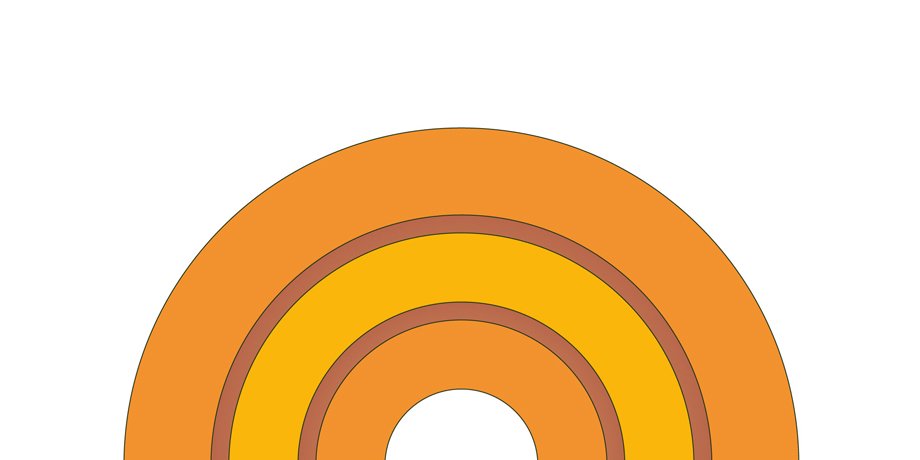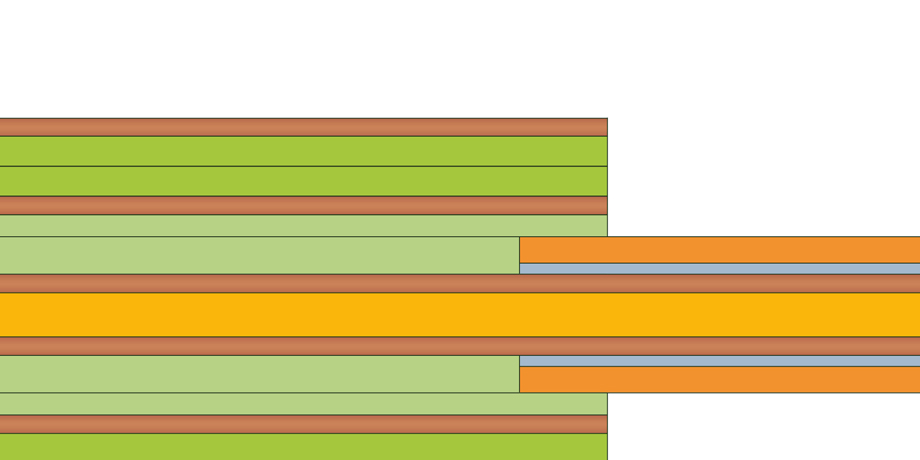Flexible PCBs
What are Flexible Printed Circuit Boards?
Flexible PCBs, also known as Flexible Circuit boards, are a unique type of electrical circuit board that utilises its malleable structure. Due to this PCB’s ability to be moulded to any shape, they have grown increasingly popular as technology advances. These circuit boards are usually found in portable technology such as smartphones, laptops, smartwatches, hard drives and automobiles.
A standard Rigid PCB as the name suggests is not designed to be bent. Rigid Circuit boards are perfect for larger products such as televisions, desktop computers, and other static applications. Flexible PCBs are perfect for more compact devices where space is much more limited.
As technology advances, devices are becoming smaller and smaller, and these devices are producing high temperatures. By optimising the space in compact devices the increased space allows the flexible circuit board to dissipate heat more effectively.
Rigid PCBs are constructed from non-substrate materials containing fibreglass to reinforce the board. Whereas, flex PCBs are made from multiple layers of flexible polyimide materials which allow more freedom of design.
Due to their efficient size, they provide a considerable weight reduction compared to rigid boards. They are designed to be more durable than rigid PCBs as they are usually subjected to continuous vibrations and mechanical stress.
Types of Flexible PCBs
Flexible PCBs are typically manufactured using thin pure polyimide materials and can be single-sided, double-sided or multilayer structures. These can be assigned against the appropriate IPC specifications as:
IPC6013 Type 1 – Single-sided
IPC6013 Type 2 – Double-sided
IPC6013 Type 3 – Multilayer
All types can use stiffeners where rigidity is required and bar single-sided, use PTHs in the same manner as a double-sided or multilayer PCB as previously detailed.
Flexible PCBs facilitate almost complete design freedom and can be bent, twisted or formed to minimise size and space. With a reduced PCB volume, due to thinner materials, weight can also be reduced – a key reason why these types of circuits are used widely in aviation and space applications.
Rigid-Flex PCB
What are Rigid-Flex Circuit Boards?
As the name implies, a Rigid-Flex PCB is a hybrid of a Flex PCB and a Rigid PCB. The combination of the two types of boards utilises the benefits each one provides, integrating the versatility of the flexible board with the robustness of the rigid board. Rigid-flex printed circuit boards are used in more complex mechanical designs, eliminating flexible cables and wiring and replacing it with integrated circuits.
Rigid-Flex PCBs, by definition, are a combination of rigid part(s) joined by interconnecting flex areas where the flex material is used across the entire PCB area.
The rigid parts are where there is no bending requirement. Again, PTHs take connections from layer to layer as required. Rigid-flex may also employ other technologies as required eg. HDI. Unlike the cost-effective flex PCBs, Rigid-Flex PCBs can be a bit more costly due to their intricate design.
Rigid-flex PCB design can be used to eliminate or greatly reduce requirements for bulky and costly cable harnesses, in turn taking out costs and reducing assembly time. Like the pure flexible PCBs, a high volume of rigid-flex PCBs are used in aviation and space applications – and also in automotive and test equipment.
We can also supply semi-flex technology solutions.
If you want to learn more about PCB Assembly you can check out our PCB Manufacturing Process blog.


